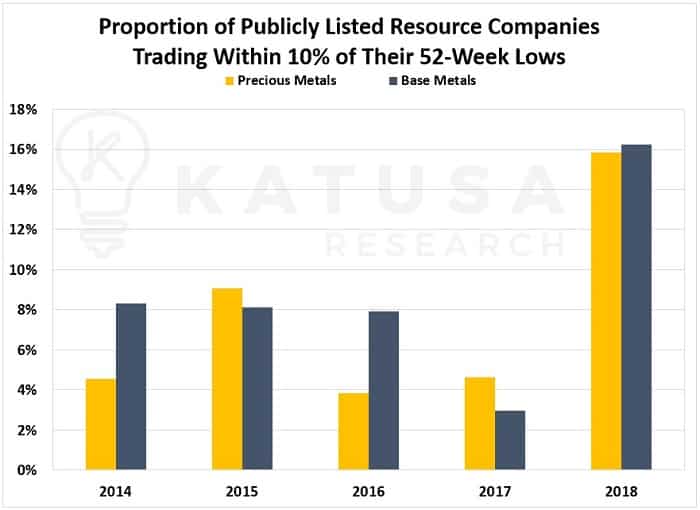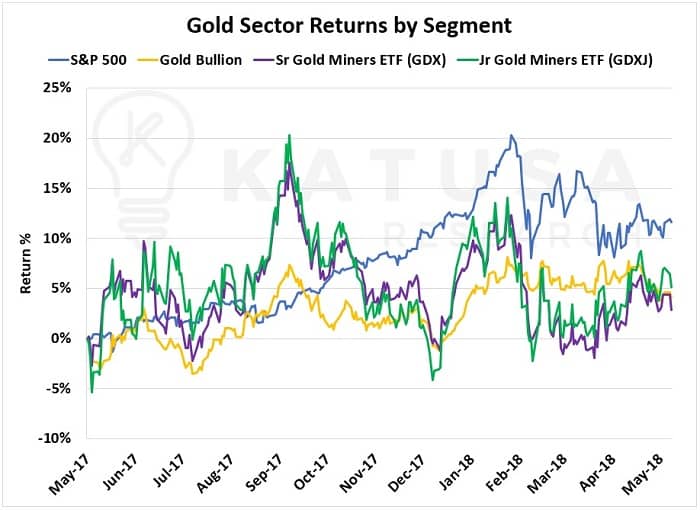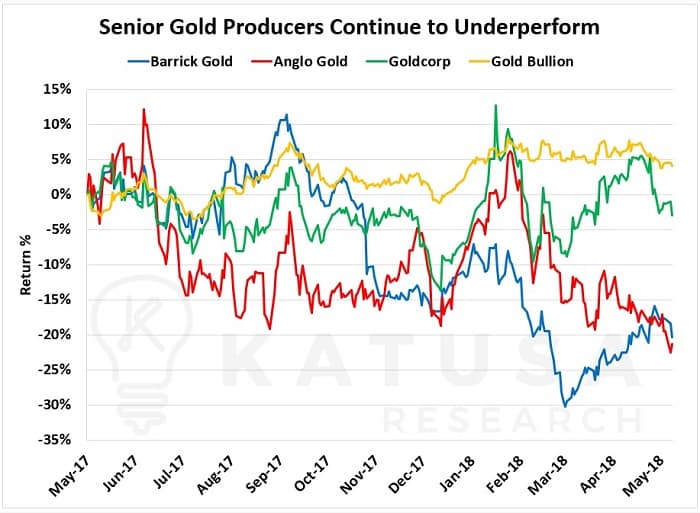There is a unique set of predators that wait motionless and lie in stealth for that single, opportune instant.
There’s no rush of heartbeats.
And no increase in tension.
Often times they are hidden and wait long periods of time for just the right moment to seize their prey.
But for many animals in this group, their success rate is phenomenal.
This type of animal is called the Ambush Predator and includes one animal that I’ve talked about frequently, especially when it comes to my style of investing – the alligator.
Stealth and a precise strategy separate an ambush predator from the rest of the animal kingdom.
On the other hand, you have Pursuit Predators, who use speed and strength to carry out a kill and plate their feast. Instinctively, humans are pursuit predators.
Although, over the course of history, we’ve used technology and tools to our advantage to start incorporating strategies natural to ambush predators. Using our size, speed and intelligence, we have an uncanny ability to chase down our prey in short distances, all the while looking for a quick return.
Ambush predators are cunning and scan their environment from a hidden position. They can outwait and outlast, looking for the perfect moment to pounce. And when that moment comes, they rapidly execute a surprise attack.
The prey will think, “I didn’t see that coming.” But the ambush predator was preparing for just the right exit strategy all along.
Until then, the ambush predator waits… often in solitude… for long periods of time.
And it can get very lonely…
Until that crucial moment to make its move arrives.
The Lonely Trade
Now, I’ve written several times in the past about the “lonely trade”.
The lonely trade is one that strays from the investing norm. It’s one that people criticize you for, and make fun of you for investing in.
However, the lonely trades are usually the ones that pay off the most for you, because you’re in at rock bottom prices. You see the opportunity before anyone else.
Alterra Power was a lonely trade.
It’s an understatement when I say Alterra had no interest from the street. I took it upon myself to organize institutional investor days for the largest shareholder and Chairman, Ross Beaty and I (one of the largest shareholders) to present the investment opportunity.
Some of these brokers, analysts, and fund managers had made millions personally with Ross Beaty in the past. Yet, they were completely uninterested in the fundamental metrics of the real value generating business that Alterra was.
Then it all changed on October 30, 2017. Alterra was bought out for over $1 Billion, delivering me and long-time readers a big win (167% since I first published my research on the company).
Northern Dynasty was another lonely trade.
I had numerous investment bankers and “savvy” investors tell me I was crazy, and that I might as well just light my money on fire rather than invest in Northern Dynasty.
As with Alterra, there was a specific date when everything changed. On November 8, 2016, Trump won the election.
Within three months, Northern Dynasty ran to over $4 per share.
If you believe you are an ambush predator investor, pay attention. We will have some amazing investment opportunities over the next 6-18 months.
Let me explain…
The Fund Manager’s Dilemma
Recently, I was at an invite-only conference where the largest funds in the world met one-on-one with the top mining companies in the world.
At this conference, I nailed down some great watch list ideas from companies for my fund and for subscribers to Katusa’s Resource Opportunities.
But my biggest takeaway from the conference was what I call the Fund Manager’s Dilemma.
The Fund Manager’s Dilemma:
“I have to sell my winners with liquidity to meet redemptions, and I’m left with my illiquid losers.”
– A quote from one of the biggest fund managers in the mining world.
The fund managers that invested in the resource sector have never been under more pressure.
One of the world’s largest fund managers openly stated to me that it’s just a matter of time before he gets fired.
Why?
The sector has underperformed the overall market, and the largest gold producers are down an average of 20% over the last 52 weeks.
In fact, 16% of precious and base metal mining companies are trading near their 52-week lows. The last time this happened was March 2009, the low in the equity markets. Below is a chart of publicly listed mining companies trading within 10% of their 52-week lows.
Active fund management has significantly underperformed the “generalist funds”. Generalist funds are the funds that have been playing the overall U.S. markets with stocks such as Tesla, Amazon, Apple, and companies on the S&P 500.
On average, the S&P 500 is up 13% over the same 12-month period.
The chart below compares the different segments of the gold sector (bullion, senior producers, junior producers) versus the S&P 500.
Because of the poor performance of mining stocks over the last 12 months, fund managers’ performance in mining has been awful across the board.
Resource fund managers experienced significant fund redemptions (people pulling their money out of the funds). And even more important is that no new money is coming into the sector.
That means fund managers have to sell whatever is liquid to meet current redemptions. Otherwise, their fund would perform even worse if they were to sell illiquid mining positions (the share price will go down even more to absorb the volume).
In the past, liquidity was only an issue with junior mining stocks. But it’s becoming an issue with all mining stocks right now as new sources of capital have dried up.
It’s not just the juniors and mid-tier companies. The majors are feeling the pain as well.
Below is a chart of Goldcorp, Barrick, and AngloGold. These are three of the largest gold producers in the world. As you can see, all three have significantly underperformed gold in the last 12 months.
Because there is no new money entering the large funds, these same fund managers have to sell an existing position to meet the demand for redemption. Or, they have to come up with the cash to buy a new position in something they like better.
In essence, the industry is cannibalizing itself.
And if you are cashed up, there will be incredible bargains to be had.
One of my close contacts is a very, very wealthy and well-connected individual. He just came back from Europe and met with every major fund for a one on one. To put this into perspective, his speculative resource portfolio is larger than the largest gold fund in the world. Successful, smart, and rich, the large funds were hoping to get a major investment from my good friend.
We got together last week for a catch up as we hadn’t hung out for a couple of months.
He asked me, “Marin – what do you think is the biggest fund out there for gold?”
I responded with, “Two billion?”
“No” he said, “It’s $600 million. And Marin, how much available cash do you think they have?”
“Very little?”
“Zero. They’re fully invested.”
My eyes opened wide. “Wow,” I thought, “My tranche matrix approach of buying… and raising my cash position… will give me incredible flexibility to get amazing deals.”
And that’s where the lonely trade can pay off for the ambush predator style of speculating.
Do you know what the Tranche Matrix is?
The Tranche Matrix is the single best way an Ambush Predator Investor can play the resource markets.
The Tranche Matrix is what has delivered my current 65% gain on my favorite copper developer. I personally use the Tranche Matrix in my research and analysis and so should you.
What to Watch Out For
I see some serious macroeconomic headwinds coming for the U.S. stock markets. And I also think the U.S. dollar will strengthen considerably over the next few months, especially with the strong likelihood of several Fed rate hikes on the horizon.
If these events happen as I expect (I don’t have a crystal ball, but I will prepare my cash position accordingly), a broader market correction will take gold and other resource stocks (the equities) down with it.
This will put additional pressure on fund managers who are continually forced to sell winners to fund losing positions. World class development stage assets, along with mid-tier and junior gold producers, will trade at significant discounts to current share prices and trading multiples.
I do foresee a situation where many large caps start trading at prices that are normally attached to mid-tiers.
And if this happens, it’s an ideal setup for Katusa Alligators using the Tranche Matrix.
Why?
You never know when the bottom will hit, and you want to build your position over a period of time. Timing the market and buying your whole allocation in one shot is for market prey, not predators.
I’m getting ready for the opportunities coming. Are you?
Regards,
Marin
P.S. One of my core portfolio holdings – Alterra – was bought out last fall, delivering 167% gains since I first wrote about it to my subscribers. Recently, one of my core copper holdings received a buyout offer and the stock is up 84% in the last 3 months.
If you missed out on these returns, don’t fret. There are 2 other core holdings in our portfolio I see as takeout targets with the potential of 100-300% returns in 12 months. To learn the tickers of those companies and more about my Katusa’s Resource Opportunities service – click here.





